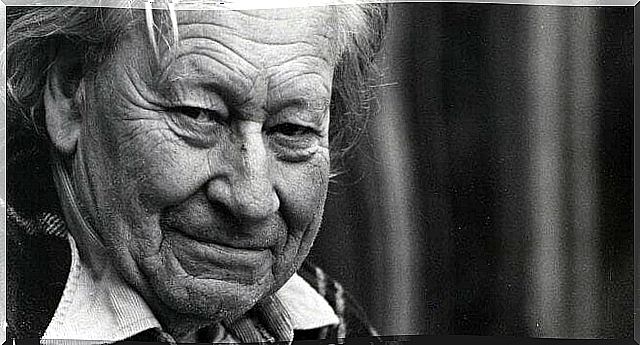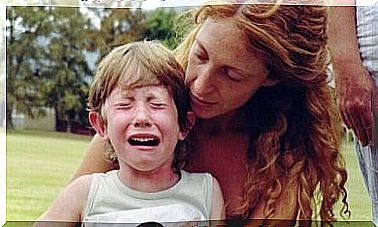Systemic Therapies: Origins, Principles And Schools

Systemic therapies have their origins in family therapy, although in reality the family does not necessarily have to be the center of attention in order for the gaze to be systemic. From this point of view, what matters is the relationship, or in other words the process of interaction between people and not so much the observation of the isolated individual.
It was the Austrian biologist and philosopher Ludwig Von Bertalanffy who, in 1968, formulated the General Systems Theory. He used the concept of a system as “a complex of interacting elements” and later applied it to the therapeutic field until it became the predominant model in family studies and relationships.
However, the systemic perspective is also nourished by contributions from other disciplines, and more particularly from the theoretical field. Among these disciplines, we find cybernetics, pragmatic developments in communication and family psychotherapy. This integration of different perspectives has allowed the development of a wide field of application which includes individual treatments but also groups, couples and obviously families (Hoffman, 1987).
The common point between these different approaches is the concept of system, from which we deduce that the whole is greater than the sum of the parts. In other words, from the point of view of the systems approach, the emphasis is on the properties of the whole which result from the interaction of the different elements of the system. This means in general terms that what matters is the relationship that arises from the interaction between people.
Thus, systemic psychologists consider the following general idea: a system, whatever it is, family, couple or social, is made up of one or more elements linked together in such a way that a change in the state will give place to another of the system ; thus, we can come to know fundamental aspects of the individual pathology of one of the members of the system.
The most prominent antecedents of systemic therapies can be found in psychoanalysis. We can cite here as an example Frieda Fromm-Reichmann’s “schizogenic mother”, Rosen’s “perverse mother” or Bell’s recourse to family interviews.
Even so, the clearest beginnings of this therapy arose with anthropologist Gregory Bateson and his team of veterans in the “ Hospital Administration of Palo Alto” . Bateson joined with other researchers such as Jackson, Haley, and Weakland to analyze the communication system of schizophrenic families.

Gregory Bateson
One of the most interesting theories that has arisen from this research has been the double bond theory ; this theory explains how the contradiction between two or more messages can lead to delirium to escape reality. Since the contradiction implies receiving two simultaneous orders impossible to satisfy, since the realization of one implies disobeying the other. For example, one could think here of a mother who says “I love you” to her daughter, while indicating to her in her gestures a rejection, or of words such as “Be more spontaneous” or “Do not be obedient. ”.
At the same time, in 1962, Jackson and Ackerman founded the journal Family Process, and Bertalanffy formulated the General Systems Theory, the latter being the ultimate theory that develops a series of factors common to all systemic therapies.
Although systemic therapies are very broad and encompass, as we said earlier, a large group of disciplines, there are a number of aspects common to all of these therapies. The most important is the concept of a system which we have already mentioned as “a set of objects or elements which are linked to each other”.
In his General Systems Theory, Bertalanffy also highlighted the concept of interaction, thus presupposing that a system implies interdependence between the parties or, in the case of systemic therapies, of the people involved in the relationship.
Moreover, within the framework of the General Theory of the Systems, one defends the idea that each of the parts which form a system can be considered as a subsystem. So the family can be the system, and the mother-daughter relationship the subsystem.
It is also important to differentiate open systems from closed systems, even if there is a unified criterion among researchers for the differentiation of the latter. If one relies on Bertalanffy’s conceptualization, a closed system is one in which no type of exchange is carried out, while an open system is in constant exchange with the environment or with other systems.
For example, closed family systems do not maintain any type of exchange with those around them. The final state depends on the initial conditions of said system and there is a progressive depletion of energy in the union and the family system.

From this observation, authors such as Watzlawick, Beavin and Jackson of the Palo Alto school and the derivation of the study of other concepts of General Systems Theory arises “The theory of human communication”. This theory brings aspects and ideas common to all systemic models such as:
- It is impossible not to communicate: this theory assumes that all conduct is communication, even silence. In addition, she considers that in some situations the “symptom” may be the form of communication.
- The mechanisms of the systems are self-regulating via feedbacks.
- There are two levels of communication: the digital level, or content, and the analog or relational level. If there is an incongruence between the two levels, the paradoxical messages appear.
- The interaction is conditioned by the punctuations introduced by the participants. This means that depending on the version we build of what we see and what we experience, we mark the relationship with other people and vice versa. So much so that the lack of agreement on how to punctuate the facts is the cause of many conflicts in relationships.
- There is a system of rules that the systemic therapist must know: recognized rules, symmetrical rules, secret rules and meta-rules.
Even so, each systemic school also relies on a number of peculiarities. Let’s take a look at some of them in more detail.
This systemic school identifies itself as the second generation of Palo Alto researchers (Watzlawick, Weakland & Fisch, 1974; Fisch, Weakland & Segal, 1982).
Some of the rules of this school are:
- The solutions tried are those which maintain the problems ; in other words, what the person does to remedy what happened sometimes only maintains the problem.
- The interventions are dedicated to identifying the circuits that intervene in the relationship and the solutions attempted. The objective is to modify the rules of interaction, which is known as Change 2, since the tried and unsuccessful solutions are Change 1.
- One of the strategies used are paradoxical interventions, which in other words consists of prohibiting tasks or communicating ideas that are far removed from the common system, but in accordance with the referential mark of the system. For that, one “speaks the language of the patient” and one “loads the prohibition of suggestion”.

Paul Watzlawick
Minuchin and Haley are the main representatives of this school. For them, it is essential to analyze the structure of the system to know the type of relations maintained by their members and thus apply the treatment.
Both envision that families organize themselves around alliances and coalitions. For example, an alliance is defined by the proximity of two members in contrast to a more distant third, while a coalition consists of the union of two members against a third. Coalitions of different generations are called perverse triangles (mother and child versus father, for example).
From this perspective, the therapist uses a whole series of techniques aimed at modifying the family structure, thus challenging the definitions of the family and achieving a positive redefinition of the symptom. We also bet on the prescription of tasks to certain members of the family, the imbalance – where the therapist allies with a subsystem – to provoke a restructuring of the limits or the paradoxical interventions of Haley.
This school was born thanks to the work of Mara Selvini-Palazzoli and her team, which focused on disorders such as anorexia or psychotic disorders, usually arising in rigid transaction families.
The Milan Systemic School pays special attention to information gathered from the moment of derivation and from the first contact. From there, they build a working hypothesis that they will contrast in the development of the first session. They mainly work on the meanings of the family in relation to the symptom and of the patient identified in order to find consensus, or not.
One of the interventions brought to light by this school is an invariable prescription, a specific program aimed at working with psychotic families which consists in entrusting the same task to the whole family, trying to ally with parents via a secret, which promotes separation of subsystems, especially that formed by children.
Systemic therapies offer another perspective on problems and difficulties. Another perspective that rewards the relationship beyond the individual as the main part of working to help people and improve their lives. A curious and interesting path which is gaining more and more importance in the therapeutic field.










